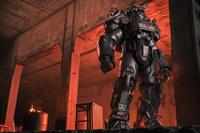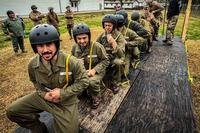BY MARK ELLIS
Mark Ellis is a British thriller writer who's behind a series of novels about DCI Frank Merlin, who fights crime in England in the shadow of World War 2. His latest novel Merlin at War has just been published in America. It's set in 1941 and features a young girl killed in a botched abortion, a French emigré shot in a seedy Notting Hill flat, a mysterious letter written by a British officer, gunned down in Crete.

Mark has written a guest post for us detailing the ways in which homegrown criminals tried to take advantage of wartime chaos to enrich themselves at the expense of their fellow citizens. It's a side of the story that often gets buried beneath the celebrations of grit and resilience that define U.K. history of the era.

It is not a widely known fact that the Second World War was a boom time for criminals in Britain. Between 1939 and 1945, reported crime on the home front in England and Wales grew by nearly sixty per cent. A number of factors contributed to this large rise. The ‘blackout’ requirements, designed to make towns and cities more difficult for German bombers to target, meant that there was no night time street lighting and everyone was obliged to draw heavy blackout curtains to ensure that domestic lighting did not leak outside. Pitch dark streets coupled with the chaotic conditions caused by the bombing raids meant it was very much easier for criminals to go about their business.
Another major contributory factor was the imposition of strict rationing and other restrictive wartime regulations which created a host of new criminal opportunities. A vibrant black market came into being and fraudsters, thieves and forgers became extremely busy. At the same time, the police forces charged with tackling crime were steadily losing good officers to the military while the vast problems caused by the bombing raids were placing overwhelming pressure on them.
Here are some striking details of the criminal activity which went on in the war years.
1. Murder
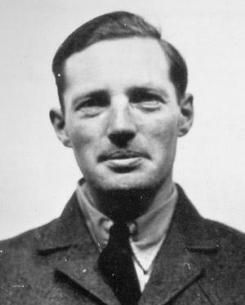
The blackout was ideal for serial killers. Gordon Cummins was a young airman who enjoyed mutilating and murdering young women. The pitch dark London streets afforded him perfect cover and at least four victims fell prey to him between 1941 and 1942 before he was caught and hanged. The press nicknamed him ‘the Blackout Ripper.’

Some killers tried to use the bombing to mask their crimes. Harry Dobkin, a firewatcher, aware that so many were being killed in the London Blitz that it was impossible for the police to investigate every death, strangled his estranged wife Rachel and buried her under a stone slab in the bombed out ruin of the Vauxhall Baptist Chapel in Central London. He was confident that if the body was discovered, it would be identified as an air raid victim. Unluckily for him, when his wife was found over a year later, the pathologist was still able to determine that the broken bone in her throat was the result of strangulation. Dobkins went to the gallows. The interesting question remains: how many murderers tried the same trick as Dobkins and got away with it?
2. Looting, robbery and theft

People today tend to have a rather rosy-tinted view of life in Britain during the war. The suggestion that looting went on during or after bombing raids usually provokes an incredulous response. Looting certainly did, however, go on, and on a very large scale. During the four months of the London Blitz to the end of 1940, 4,584 looting cases were brought before the judiciary in the Old Bailey, London’s main criminal court. The unhappy owners or occupants of bombed-out dwellings would often return from their air raid shelters to find that the smouldering ruins had been stripped of any surviving valuables. Looting culprits included not only criminals and ordinary citizens but, notoriously, air raid wardens, firemen and other members of the home defence forces. The looters could be manic in their pursuit of spoils. When a famous nightclub in London took a direct hit and many customers were killed, rescuers had to battle through looters who were fighting wildly amongst themselves to reach the dead bodies first and strip them of their jewellery.
3. Wartime Scams and the Black Market
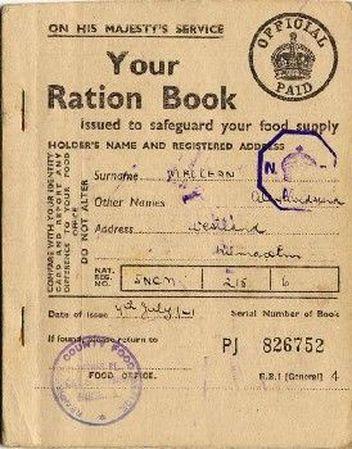
Many items were rationed in the war, the most important being food, petrol and clothing. Restrictions were administered through a system of ration books and coupons. Forgers and thieves, of course, could see great scope for criminal exploitation of that system. The large money at stake is clear from one prosecution in the North of England in 1944. A gang stole 14,000 newly issued ration books and then sold them in the black market for a total estimated profit of £70,000. This would be approximately £3m (or $4m) today. Another case involved the forgery of clothing coupons. The going black market rate for one forged coupon was £10 ($13), or £400 ($520) today. Substantial quantities of these were circulated on the streets of London.
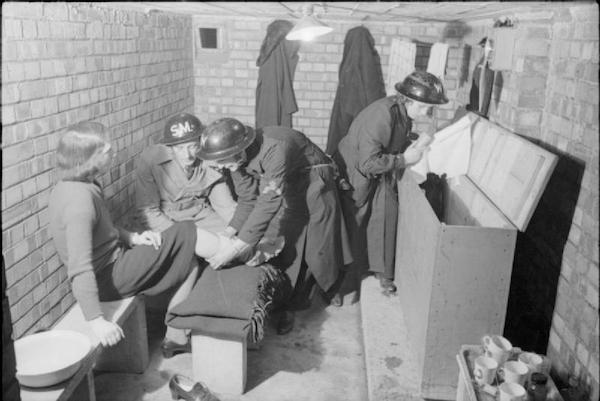
Other wartime regulations provided new opportunities for creative criminals and corrupt professionals and officials. People wanting to avoid the military draft could turn to crooked doctors who would provide false health exemption certificates for a fat fee. The vast government civil defence budget was open to abuse. Much of the construction of vital buildings such as air raid shelters required certification from local government officials. With a corrupt official in his pocket, a bent builder could cut corners and defraud the public purse, sometimes with fatal consequences. In one case in London, a number of jerry-built bomb shelters collapsed in raids and innocent people died.
The government established a fund to pay compensation to people who were bombed out of their homes. Inevitably people began making false claims against the fund. One man in London made nineteen such claims in a five month period before he was found out and imprisoned.
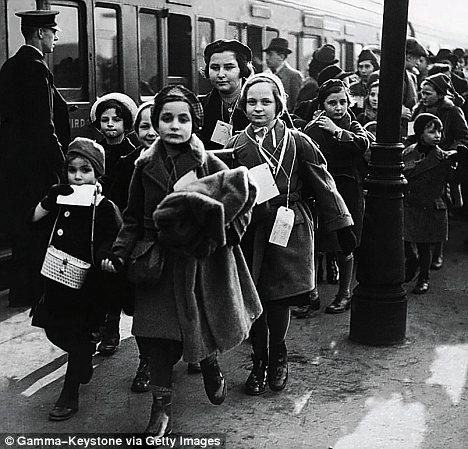
Large numbers of European refugees found homes in Britain during the war. Criminals soon identified a scam to target at them. Many if not most displaced persons would have had difficult dealings with the authorities in their homelands during the 30s. A terrible fear of uniformed police would be a natural consequence of this. The refugees were not to know that the British constabulary bore little resemblance to the Gestapo. Some gangs quickly picked up on this fear. They would dress in stolen police uniforms and call on the foreigners. After knocking violently on the door of a property, they would tell the petrified inhabitants that they had to accompany them to the police station. The refugees would be driven a distance away and kept waiting, while the rest of the criminal gang would move in to ransack their home and clear off with anything of worth.
4. Major Gang Crime
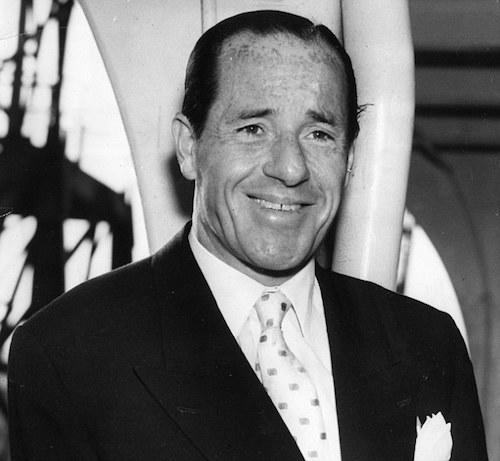
The war did not dent the activities of the large scale crime gangs, the biggest of which were based in the capital, but like all other criminals they reveled in the increased opportunities for illegal profit. They became masters of the black market. They took advantage of the weakened police force and the chaos of wartime London to scale up all their traditional activities. In London, the leading local gang led by Billy Hill pulled of a string of spectacular smash and grab robbery raids on some of the city’s most prestigious jewelry shops.
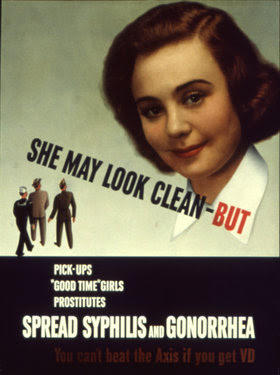
The Maltese Messina gang consolidated their control of London’s vice industry which boomed during the war. By 1944 there were over 3 million men in the home armed forces in Britain and over 1.5 million GIs. Soldiers, sailors and airmen would swarm into town on furloughs seeking a good time and the gangs were happy to provide it. The Messinas ran a huge band of prostitutes, known as the ‘Piccadilly Commandos’ to meet demand.
5. Americans
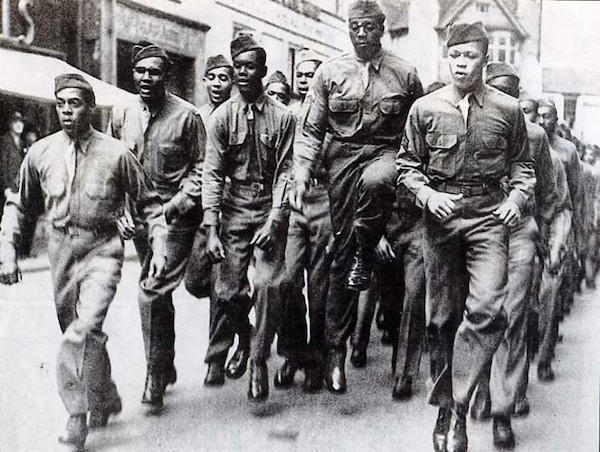
American military personnel benefitted, at the insistence of the US government, from a major exemption – they were not subject to British justice. Instead they were subject to special US courts set up throughout the country which applied their own American rules of law. This arrangement worked quite smoothly until late in the war when it became known in Britain that considerably more black GIs than white were prosecuted in these courts and, if convicted, sentenced to much harsher sentences. This ultimately led to a public outcry. In one case, black soldier Leroy Henry was convicted of rape on apparently flimsy evidence. Rape was a capital offence under the American military system and he was sentenced to death. There was a major reaction in the British press and elsewhere. The judgement was commonly seen as having more to do with race than justice. Over 30,000 people in the city of Bath, where the offence had supposedly taken place, signed a petition seeking Henry’s reprieve. Eventually General Eisenhower, the commander of US forces, overturned the verdict as unsafe and Henry resumed his duties.
The defeat of Hitler in 1945 brought an end to the blackout and the bombs, and conditions reverted mostly to normal for the criminal community, although rationing, and the profitable opportunities attached to it, lasted well into the 50s. Crime as always carried on, but many crooks increasingly pined, with the passage of time, for the golden years of 1939 to 1945. One notorious British thug gave a television interview not so long ago in which he said he'd never been able to forgive the Germans for surrendering – during the war he and his fellow criminals had never had it so good!


